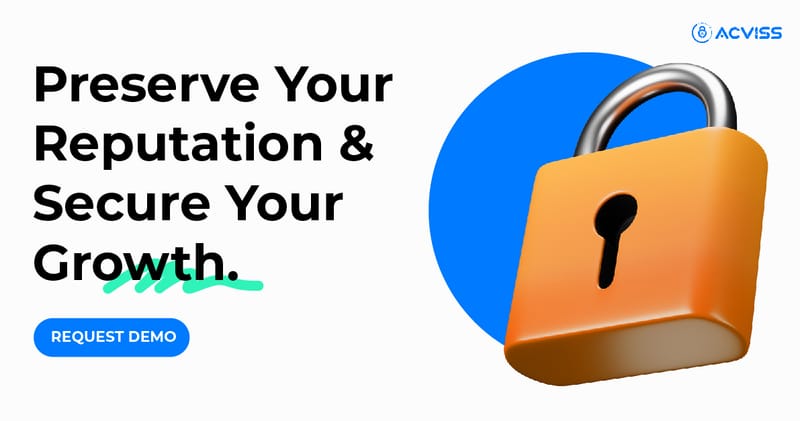Essential Online Brand Protection Strategies for Combatting Brand Abuse

Your brand's reputation is just a click away. What happens when that click lands on a fake website, a malicious social media account or a marketplace overflowing with counterfeits? This is the unpleasant reality of brand abuse and it can inflict serious damage.
Brand abuse has become a pervasive threat for businesses, particularly for those operating in the direct-to-consumer (D2C) space. With the rise of e-commerce platforms and social media, perpetrators have found increasingly sophisticated ways to exploit brands, tarnishing their reputations and impacting their bottom line.
Contents
The Growing Concern of Brand Abuse
Brand abuse contains a range of malicious activities, including counterfeiting, trademark infringement, unauthorized distribution and online impersonation. Brand abuse resulted in an 85% increase in consumer losses since 2020. For D2C brands, which rely heavily on their online presence and reputation, such abuses pose a significant threat to their credibility and consumer trust.
Here are some of the most common forms of brand abuse:
- Counterfeiting: Creating and selling imitation products that infringe on a brand's trademarks and designs.
- Trademark Infringement: Using a brand's registered trademark without permission on products, packaging, marketing materials, or domain names.
- Domain Squatting: Registering domain names similar to a brand's name with the intention of selling them to the brand for a hefty profit.
- Social Media Impersonation: Creating fake social media accounts that mimic a brand's official accounts to mislead consumers or spread misinformation.
- Negative Reviews and Online Defamation: Posting false or misleading information about a brand online, damaging its reputation.
- Grey Market Products: Selling genuine brand products through unauthorized channels, potentially impacting brand control over pricing and distribution.
How Does Brand Abuse Impact Indian D2C Brands
Indian D2C brands have witnessed a surge in brand abuse cases in recent years. As these brands gain popularity and market share, they become lucrative targets for counterfeiters and unauthorized resellers.

The D2C market in India is expected to witness a stupendous 15-fold growth by 2025, reaching a staggering $100 billion. That's a massive jump from $33.1 billion in 2020.
Moreover, the vast and diverse Indian market presents unique challenges in terms of regulatory compliance and enforcement.
Consider the case of an emerging Indian D2C brand specializing in organic skincare products. Despite investing heavily in marketing and product development, the brand faces a growing problem of counterfeit products flooding the market. These counterfeit items not only diluted the brand's reputation but also posed potential health risks to consumers.
Strategies for Protecting Your Brand Online
To combat brand abuse effectively, Indian D2C brands need to implement a proactive and multi-faceted approach. Here are some strategies they can adopt:
1. A Strong Intellectual Property Portfolio:
Registering your brand name, logo and slogans as trademarks allows legal recourse against unauthorized use. Consider international registration for global protection. Copyright your original content, such as product designs, marketing materials, and website content.
2. Proactive Online Monitoring:
Utilize online brand monitoring tools like Truviss by Acviss to track mentions of your brand name, trademarks, and variations across the internet, including social media, forums, e-commerce marketplaces, and search engines. They will actively monitor relevant social media platforms for brand mentions, impersonator accounts and negative sentiment.
Take a Look at the free tools to secure your d2c brand
3. Take Down Strategies:
Establish a clear process for removing infringing content, including counterfeit listings and fake social media accounts. Consider creating templates for takedown notices sent to online platforms. Many online platforms offer reporting mechanisms for trademark infringement and impersonation. Familiarize yourself with their policies and reporting procedures.
4. Community Building:
Actively engage with your audience on social media and online communities. Respond to comments and questions promptly to foster a positive brand experience and build brand loyalty. Encourage satisfied customers to leave positive reviews on trusted platforms. This can help counter the influence of negative reviews and promote brand authenticity. Collaborate with relevant and reputable influencers to promote your brand and build trust with your audience.
Is 360 brand protection possible? it is we'll tell you how!
5. Legal Action:
In cases of blatant trademark infringement or counterfeiting, consider pursuing legal action to protect your brand and deter future abuse. Consult with an intellectual property lawyer experienced in online brand protection. Or leverage platforms like Acviss Certify to issue cease-and-desist notices to offenders.
Case Study: Protecting an Indian D2C Brand
An Indian D2C brand successfully tackled brand abuse using Acviss solutions. Here's how:
The Challenge
An Indian D2C brand specializing in consumer electronics faced rampant counterfeiting and unauthorized distribution, especially on popular e-commerce platforms. This not only led to revenue loss but also eroded consumer trust in the brand's quality and authenticity.
The Solution
The brand partnered with Acviss to implement a comprehensive brand protection strategy. Truviss was deployed to monitor online channels for counterfeit listings and unauthorized sellers. Acviss Certify enabled the brand to authenticate products using unique identifiers and QR codes, providing consumers with peace of mind.
The Result
With Acviss solutions in place, the brand was able to significantly reduce instances of brand abuse within a few months. Counterfeit listings were swiftly removed and unauthorized sellers were identified and blocked from selling the brand's products. As a result, consumer confidence in the brand was restored, leading to increased sales and market share.
Read more customer success stories here
An Ongoing Process
Brand abuse poses a serious threat to Indian D2C brands, but with the right strategies and tools in place, it can be effectively mitigated. By leveraging solutions like Acviss Truviss and Certify, brands can safeguard their reputation, maintain consumer trust, and thrive in the competitive e-commerce landscape.
Want to learn more about Truviss and its online brand protection prowess? Get in touch with us or book a demo today. Acviss has protected 2 billion+ products globally and served 80+ brands scaling different industries and businesses. Join us to secure your standing in the market and amplify your brand and trust among your customers.
